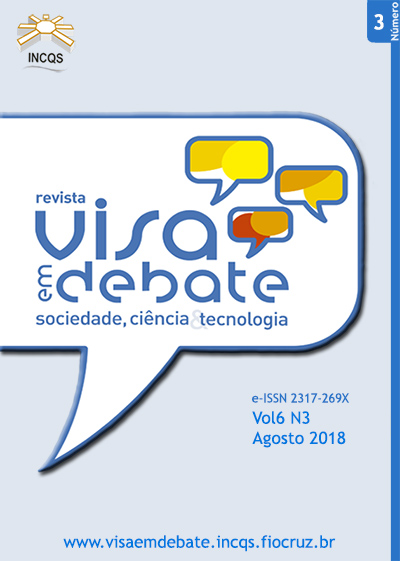Local Lymph node assay in the differentiation between an allergic contact dermatitis and irritation: study of the expression of T lymphocyte surface markers
DOI:
https://doi.org/10.22239/2317-269X.01088Keywords:
Contact Dermatitis, LLNA, Alternative Method, Sanitary SurveillanceAbstract
Introduction: The Local Lymph Node Assay (LLNA) was developed as an alternative to Buhler and Maximization assays. It is applied to discriminate substances that are able to induce contact dermatitis and the endpoint is cell quantification in mice auricular lymph nodes. Although recommended by international agencies involved in the development of alternative methodologies, LLNA still needs to be improved. Objective: In this context, the goal of this study was to investigate possible differences in lymphocyte subpopulation patterns among mice treated with irritants and dermosensitizers. Method: Animals were treated with sensitizers dinitrochlorobenzene (DNCB) and paraphenylenediamine (PPD) and irritants sodium lauryl sulfate (SLS) and tritonX-100 (TX-100) for 3 days, using dorsum area of both ears. The percentage of different lymphocyte subpopulations were analyzed by flow cytometry. Ears of animals were also evaluated for possible pathological alterations. Results: Differences were observed in CD4+ CD25+ and CD4+ CD69+ cells, as well as in the proliferation of these subpopulations. The histopathological analysis of the ears showed no difference between the treatment with either dermosensitizers or irritants. Conclusions: T lymphocyte phenotyping might still be a useful tool in the development of an assay to differentiate between dermosensitizers and irritants. Moreover, these results may contribute to improving knowledge on this field and helping in the search of a correlate in vitro assay.
Downloads
Downloads
Published
Issue
Section
License
Copyright (c) 2018 Health Surveillance under Debate: Society, Science & Technology (Vigilância Sanitária em Debate: Sociedade, Ciência & Tecnología) – “Visa em Debate”

This work is licensed under a Creative Commons Attribution-NonCommercial-NoDerivatives 4.0 International License.
COPYRIGHT ALLOWANCE The author (s) hereinafter designated as the ASSIGNOR hereby assign and transfer, free of charge, the ownership of the copyrights related to this ARTICLE to the Vigilância Sanitária em Debate: Sociedade, Ciência & Tecnologia (Health Surveillance under Debate: Society, Science & Technology) – Visa em Debate, represented by FUNDAÇÃO OSWALDO CRUZ, established at Av. Brasil, nº 4365, Manguinhos, Rio de Janeiro, RJ, Brazil, CEP 21045-900, under the conditions set out below: (a) The terms and conditions set forth in this Agreement shall apply to the following: 1. The ASSIGNOR declares that they s(he) is (are) the author (s) and owner (s) of the copyrighted property of the ARTICLE submitted. 2. The ASSIGNOR declares that the ARTICLE does not infringe the copyrights and / or other property rights of third parties, that the disclosure of images (if any) has been authorized and that they s(he) assume(s) full moral and / or property liability for its content, before third parties. 3. THE ASSIGNOR assigns and transfers all copyrights relating to the ARTICLE to the ASSIGNEE, especially the rights of editing, publication, translation into another language and reproduction by any process or technique. The ASSIGNEE becomes the exclusive owner of the rights related to the ARTICLE, and any reproduction, totally or partially, is prohibited in any other means of publicity, printed or electronic, without prior written authorization from the ASSIGNEE. 4. The assignment is free and, therefore, there will be no remuneration for the use of the ARTICLE by the ASSIGNEE.







